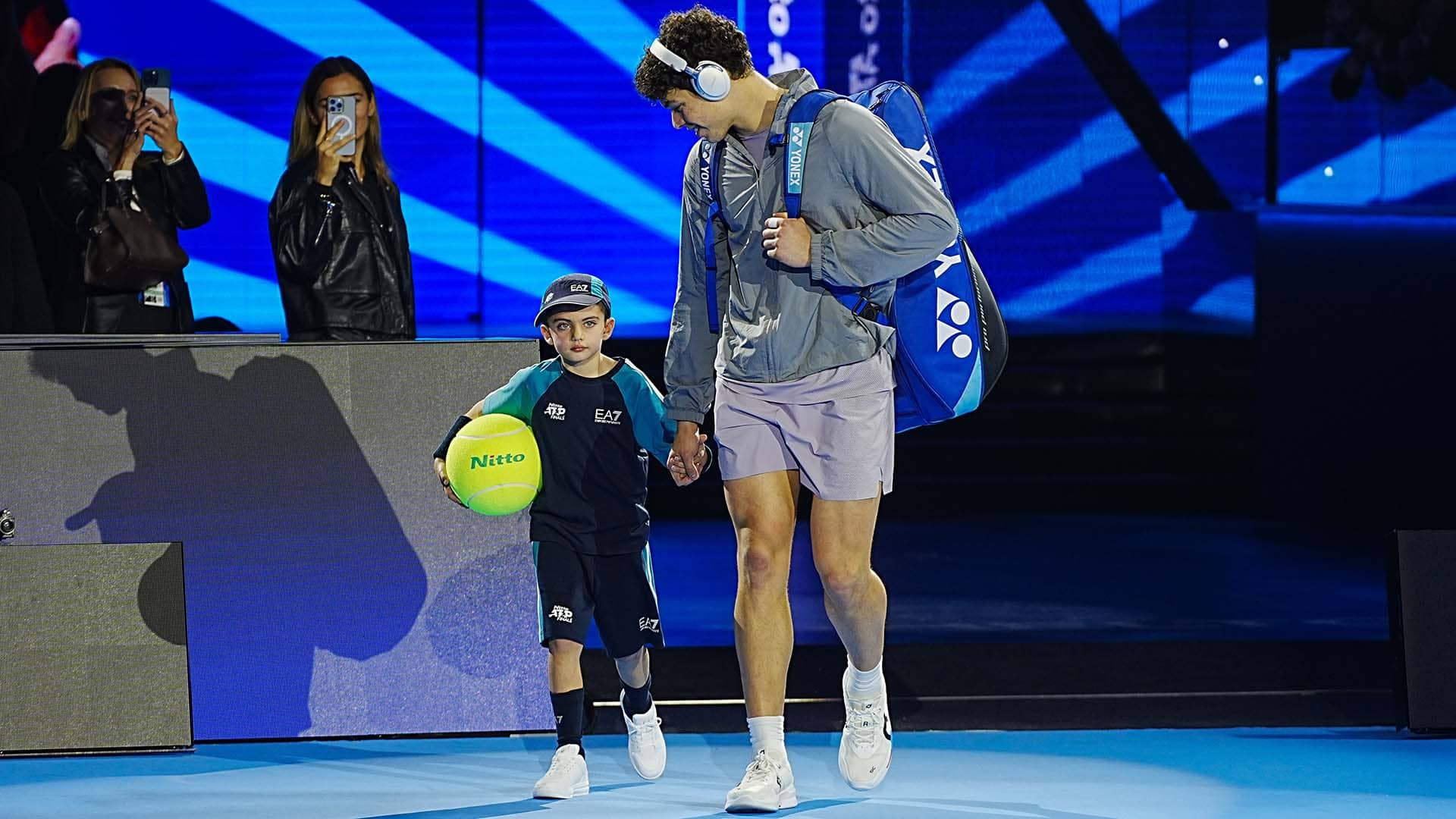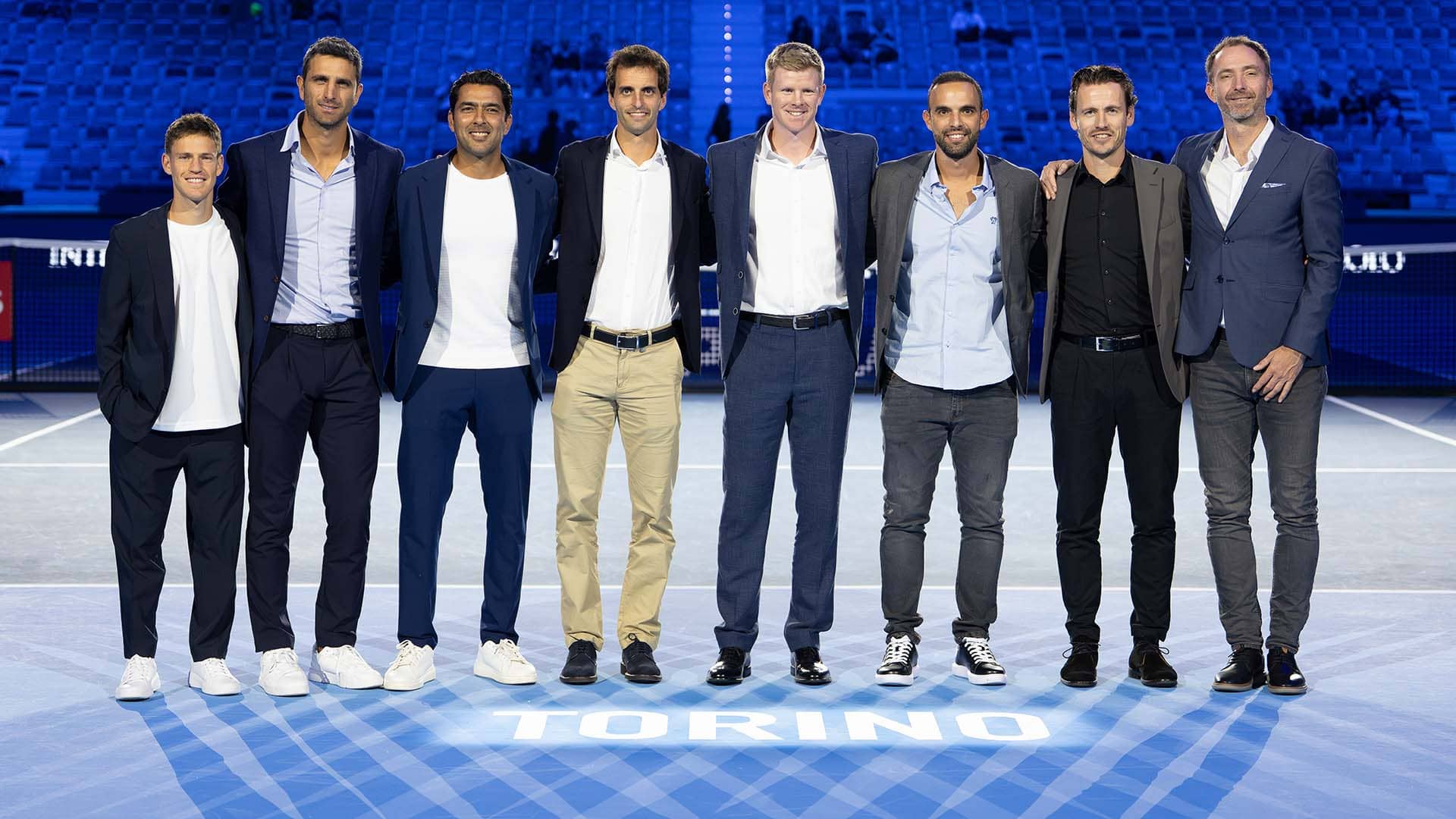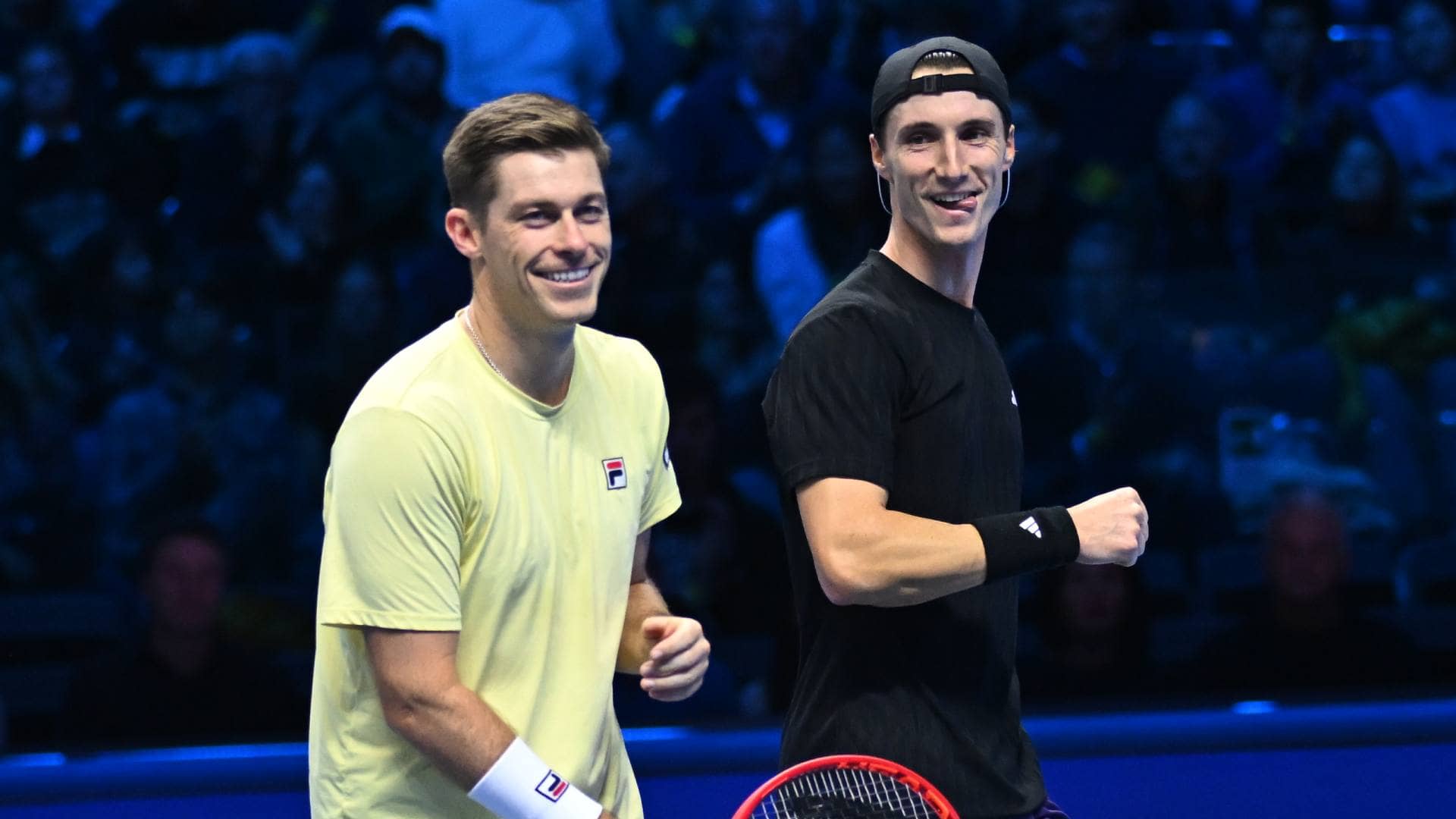Gaudenzi's Vision for Tennis Amid Turin's High Stakes
With the Nitto ATP Finals electric under the threat of a year-end No. 1 shift, ATP Chairman Andrea Gaudenzi opens up on the event's Turin triumph, the calendar's relentless grind, and a unified future that could ease the mental strain on players chasing glory across surfaces and seasons.

In the humming intensity of Turin's Pala Alpitour, where the sharp thwack of racquet on ball reverberates off the arena's sleek walls and the crowd's anticipation builds like a gathering baseline rally, the Nitto ATP Finals unfold as tennis's ultimate pressure cooker. Elite players maneuver through round-robin matches, each inside-out forehand or down-the-line backhand not just a shot but a calculated step in the chess of season-long supremacy. The indoor hard courts demand quick adjustments—Sinner's fluid one–two combinations slicing through defenses, Alcaraz's explosive crosscourt winners forcing opponents into defensive underspin lobs—while the psychological weight of potential No. 1 changes hangs over every point, turning routine exchanges into high-wire acts of focus and endurance.
Turin's rise eases transition fears
Five years into its Turin chapter, the Nitto ATP Finals has evolved from pandemic-shadowed beginnings into a beacon of the sport's resilience, surpassing the high bar set by London's storied run. The Italian Tennis Federation's meticulous stewardship has transformed initial anxieties into unqualified success, with the arena pulsing with energy as fans lean into matches where tactical pivots, like shifting from aggressive serves to probing slices, define momentum swings. This edition stands out for its rare drama: the world No. 1 ranking dangles in the balance, infusing every group-stage clash with the urgency of a deciding set, where players must balance energy conservation for semifinals against the need to dominate early.
Andrea Gaudenzi, speaking courtside during the press conference, captured the event's ascent with evident pride, emphasizing how each year has built upon the last to deliver an atmosphere that rivals the Grand Slams' grandeur. He noted the excitement of top talents battling for year-end dominance, a scenario that captivates spectators and heightens the mental stakes—imagine the crowd's roar erupting after a perfectly timed inside-in forehand that shifts a tiebreak's tide. As the round-robin format tests adaptability, with players recalibrating strategies mid-tournament to counter varied return patterns, the venue's intimacy amplifies these moments, making every underspin approach feel personal and profound.
Overall, it’s an amazing edition. We started with COVID, which wasn’t easy, but every single year the event has improved. Kudos to the FITP, they've done an incredible job. I think we were all a bit anxious post London, because London was a great event. I think we've delivered, and we are above the expectation we had initially.
Looking toward the horizon, commitments beyond the current agreement remain under discussion, with Gaudenzi expressing deep satisfaction with Turin's hosting and signaling talks with the federation early next year to explore extensions through 2030. This fluidity echoes the players' own navigation of uncertain schedules, where venue familiarity provides a psychological anchor amid the tour's constant flux—forcing tactical choices like prioritizing recovery slices over power serves to maintain freshness on the indoor surface. The event's success, he conveyed, stems from delivering premium experiences that draw crowds eager for the tactical ballet of elite matchups, where a single crosscourt lob can swing group standings and season narratives alike.
Calendar complexities test player limits
Tennis's scheduling demands reveal a sport uniquely unforgiving, its direct-elimination format creating wildly divergent paths: a top seed might endure seven grueling matches over 12 days at a Grand Slam, while most competitors exit after one or two, turning tournaments into brief, high-pressure bursts. Gaudenzi likened this to managing four calendars within one, with elites like Alcaraz and Sinner logging around 80 matches across 18 to 20 events, their mental resilience forged in adapting to surface shifts—from clay's extended rallies to hard courts' rapid one–two exchanges. Lower-ranked pros, meanwhile, grind through 30 to 35 tournaments, half falling in the first round and 75 percent by the second, demanding psychological flexibility to rebound from early losses and chase points via inside-out patterns honed in smaller venues.
The ongoing trim of ATP 250s, down from 38 to 29 with further reductions targeted for 2028 alongside the Saudi Masters' arrival, underscores efforts to streamline this chaos without starving development pathways. These events remain vital for emerging talents, offering spaces to refine crosscourt defenses and down-the-line passes away from major spotlights, yet the cuts spark debates on access to higher tiers like the 500s and 1000s. Gaudenzi stressed the tiered pyramid's role in balancing needs—Grand Slams and Masters for the elite's premium clashes, 500s and 250s for consistent play to build form—while the fixed 52-week year, coupled with a truncated off-season, squeezes recovery, especially for those lingering until the Finals or Davis Cup.
Fragmentation across seven entities—the independent Grand Slams, ITF's shifting Davis Cup, ATP, and WTA—compounds the strain, pulling schedules in conflicting directions and leaving players to self-manage amid temptations like exhibitions. He expressed empathy for this navigation, where top players face the mental toll of deep runs, arriving early and departing late, their strategies evolving from aggressive inside-ins to conserving serves in extended draws. The OneVision plan, he explained, aims to unify governance for a more cohesive calendar, prioritizing fan-favorite moments like Masters showdowns where tactical depth shines through varied shot-making.
Reflecting on his own career, Gaudenzi recalled the frustration of ranking in the top 55 yet accessing only two Masters main draws—Indian Wells and Miami—despite qualifying for Grand Slams, a barrier that stifled ambition and forced suboptimal scheduling. He championed expanding to 96-player fields at seven of nine Masters, opening doors for the top 100 and easing the psychological climb, allowing more pros to test one–two combinations against elite returns. In his journeyman days, he admitted to errors like playing European clay 250s the week before the US Open, disrupting hard-court transitions and highlighting the need for disciplined calendars focused on points over guarantees.
Complaints about Masters 1000 expansions to 12 days, echoing long-established formats at Indian Wells and Miami, have drawn fire from the top ranks, with Jack Draper polling peers and finding scant enthusiasm for the added commitment. Gaudenzi defended the model by pointing to its financial uplift, mirroring Slams' success through superior infrastructure and history, with ticketing driving over 50 to 60 percent of revenue compared to media's 60 to 70 percent in other sports. The 2025 rollout, year three of OneVision and one of expansions, has already boosted top-line figures, channeling nearly $20 million in 2024 profit-sharing—up from $6 million in 2023—to add 25 percent atop increased prize money, with total profits approaching $109 million benefiting the entire ecosystem, including ranks 100 to 150.
Yet he acknowledged the elite's burden, where early arrivals and late exits amplify mental fatigue, clashing with exhibition payouts that dwarf per-day Masters earnings. The compromise includes opening tournament economics after 35 years of opacity, making players equity partners with aggregated media rights, and he urged patience to assess long-term value while advising schedule tweaks—swapping some 250s or off-tour events for Masters depth to balance the load. This tactical recalibration, like varying slice depths to disrupt rhythms, promises sustainability, ensuring players enter key swings mentally sharp rather than depleted.
An ideal off-season eludes easy definition, but Gaudenzi advocated for at least seven weeks: one or two for rest, more for physical rebuilding before racquet work resumes, tailored to finish positions—top-eight lingering post-Finals face delays, compounded by Davis Cup's format. He cherished the competition's national fervor, memories of packed Palermo stadiums against Agassi and Sampras evoking raw emotional highs unmatched in solo tours, and proposed a biennial home-and-away structure to mirror World Cups, easing surface jumps like post-clay hard-court whiplash. The season's close—from Paris to Finals—influences Australian preparations; Djokovic claimed the Australian Open seven times without lead-up events, as Sinner did recently, illustrating elite flexibility to skip early weeks and conserve for majors.
OneVision bridges governance divides
Beneath the tactical intricacies lies governance's persistent fracture, with four autonomous Grand Slams, ATP, WTA, and ITF creating a patchwork that leaves players feeling sidelined despite their on-court value. Gaudenzi hailed the Slams as tennis's crown jewels, the arenas where dreams of No. 1 and titles ignite, yet emphasized OneVision's 2020 launch as a blueprint for unity—bringing men, women, and all tiers to one table for equitable representation and streamlined decisions. In the ATP's democratic setup, 50 percent player governance via elected councils ensures voices are heard internally, but broader independence hinders cohesive scheduling, fueling calls for transparency in compensation and calendars.
This push addresses the psychological disconnect, where pros seek fair shares in a ticketing-heavy revenue model, the expanded economics now funneling profits downward to nurture ranks 100 through 150. Gaudenzi drew from his playing frustrations—over-reliance on 250s for access, poor choices like pre-US Open clay swings—to advocate a pyramid where high-rankers ascend to Slams and Masters, avoiding lower tiers unfit for their level, akin to Formula 1's talent protections. By 2028, dedicated weeks—10 for 250s, eight for 500s, atop 10 Masters and four Slams totaling 32—will optimize for all, lower ranks leaning on Challengers to build resilience through surface adaptations and pattern drills.
The Masters expansions, despite top-player gripes, form part of compromises like profit-sharing and open books, transforming opaque partnerships into collaborative ones with surging 2024 payouts. Gaudenzi called for self-discipline in scheduling, prioritizing ranking points over financial lures, a mindset shift that lightens mental loads and aligns with the sport's essence—thrilling exchanges where a well-disguised inside-out forehand sets up the decisive down-the-line winner. As Turin's lights illuminate these debates, the Finals' intensity foreshadows OneVision's potential: a unified front where calendar pressures yield to shared momentum, players entering off-seasons renewed and the tour poised for deeper rivalries that captivate globally.
In this evolving landscape, the psychological arcs of endurance—from round-robin conservations to off-season resets—point toward a future where tactical brilliance thrives without fracture. Gaudenzi's roadmap, empathetic yet resolute, envisions a calendar that honors the human element, allowing stars like Sinner and Alcaraz to channel season-long duels into legacy-defining peaks, the Pala Alpitour's echoes lingering as a promise of balanced horizons ahead.


